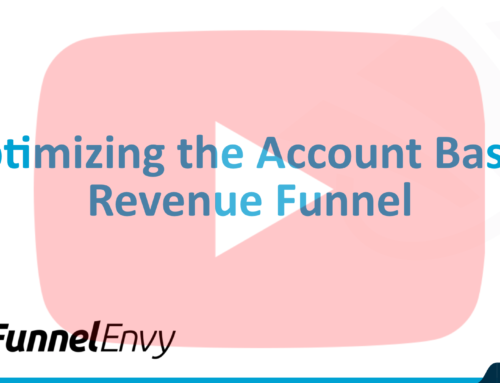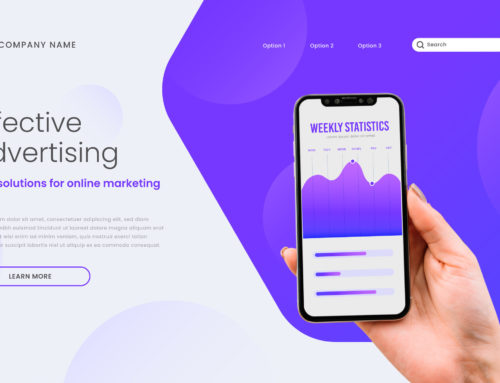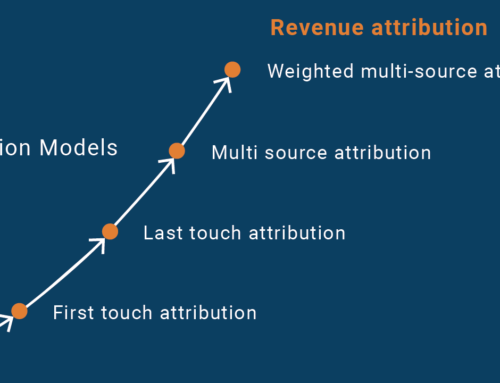Making sales—and doing it consistently—is easier said than done these days.
There’s much more competition online than there was just a few years ago. It’s increasing all the time. Add in increased consumer skepticism and shortening attention spans, and you have a recipe for longer sales cycles and missed opportunities.
A lot of businesses haven’t adapted. They either don’t follow up with leads, or they stretch themselves thin by spending most of their time emailing and calling prospects without rhyme or reason.
This doesn’t have to be you, though.
The key?
Strategically using drip email campaigns to turn building engagement, generating leads, and converting them into a cost-effective system.
Keep reading to find out how to do it in five simple steps.
 Image credit: -jell- via Compfight cc
Image credit: -jell- via Compfight cc
Broadcast Emails Aren’t as Effective as They Used to Be
Most of us don’t have the budgets or huge sales teams Apple and Coca-Cola have. So we have to make do, following up with prospects and closing sales the best we can with limited resources.
Online, businesses have been using email marketing to do this for years. Email is cost-effective and reliable. Up until recently, it was an almost guaranteed way to get your target customers’ attention.
But things have changed. There are more distractions online than ever before. The average email inbox is stuffed to the brim. There isn’t enough time in the day for people to even read—much less respond to—all the emails they receive from businesses.
But you don’t have to sit back and watch your business emails become less and less effective. With the right strategy, you can plan and launch drip email marketing campaigns that get read and drive conversions.
Drip Email Campaigns: Automated Engagement and Conversions
“Drip email marketing campaigns” get their name from an agricultural method where water is gradually released on crops to produce the best possible yield.
In drip email campaigns, a series of emails is sent to subscribers automatically. Each email in the sequence is triggered by a designated time interval or the email subscribers’ actions. Drip email campaigns are also called “autoresponders,” “lifecycle emails,” and plenty of other names.
Many businesses are aware of drip email campaigns, but they struggle to plan and execute them effectively. You can avoid their mistakes by following the framework below.
Here’s how to create a profitable drip email campaign in five simple steps:
1. Carve out the Right Audience
Not all of your email subscribers are created equal. The sooner you stop treating them that way, the sooner you’ll get more of them reading (and acting upon) your emails.
Your subscribers probably have some characteristics in common. But there are important differences that distinguish certain “types” of list members from others. Maybe Jane signed up nine months ago, but Bob just joined last week. Or Carlos is interested in your productivity app, but Rachel has her eye on your app-development services.
It takes some time to segment your email list before launching a drip email campaign. But that investment pays off in the form of better click-through rates, open rates, and conversions. Usually the better you segment, the higher your ROI.
Here’s what happened when a group of North American marketers segmented their email list:
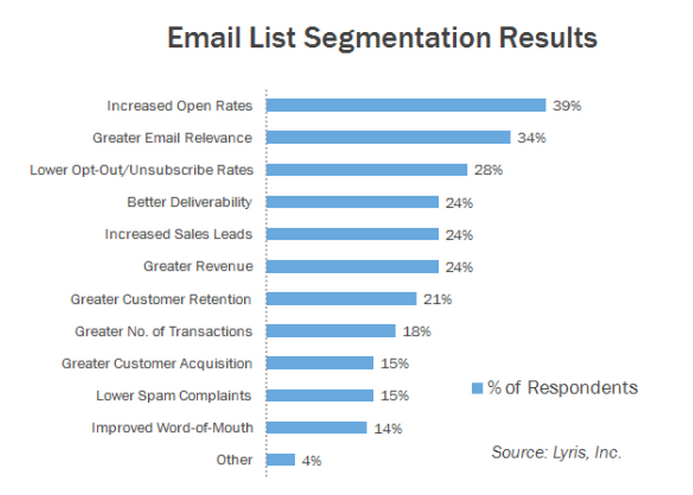
Image credit: Marketing Stream
Getting as granular as possible makes every member of your list feel appreciated and understood. But how can you get started dividing your subscribers?
Here are just a few ways you can segment your email list:
- Demographics
- Length of time on your list
- Purchase history
- How often they visit your website
- Which pages of your website they visit
- Which emails they previously opened or ignored
It helps to know exactly whom you’re talking to before you think about launching a drip email campaign. Dividing your list into smaller segments helps you know what you’re trying to accomplish, which leads us to step two…
2. Pick One Goal per Campaign
Someone who signed up to your email list yesterday probably isn’t ready to hear about your $500 an hour private consulting session.
But someone who’s been on your list for over a year and already bought a group coaching session might be.
Just like how it’s smart to limit each page of your website to a single conversion goal, it makes sense to define one goal per each drip email campaign you launch.
A lot of businesses try to craft emails that reach Everyone (with a capital ‘E’) and accomplish a dozen different things at once—a recipe to fail on both accounts. But defining a single goal for each campaign lets you tailor your emails to be more effective.
What are the different goals you can accomplish with drip email campaigns? Here are just a few examples:
- Welcome new leads to your list and build engagement
- Get current customers to renew for another year of service
- Reengage subscribers who haven’t used your product for a while
- Get customers who abandoned their shopping carts to buy
- Confirm reservations or transactions
- Recommend related products based on the subscriber’s purchase history
- Deliver a course or other educational content
Drip email campaigns are the perfect place to be creative and let your personality shine through as a brand. The only limits to how you can use them are your imagination and delivering content through email.
3. Create Content for Your Drip Email Campaign
Okay. So you have a list segment you’re targeting and a specific goal in mind…
What’s next?
Now’s the time to fill your drip email campaign with content.
The biggest difference between regular broadcast emails and drip emails: the latter don’t exist in a vacuum. Just like you structure web copy to grab a reader’s interest and build it as they scroll down the page, you can structure drip emails to build on each other and move subscribers closer to your specific goal.
There’s no need to try to sell a list segment on your product within the context of a single email. That will just put them off anyway. The ideal email length depends on your niche, but generally shorter is better.
Businesses run into trouble when their drip emails sound like they’re automated. You might use email software like AWeber or MailChimp to execute your campaigns, but the less you remind readers of that, the better.
Just because you’re delivering emails automatically doesn’t mean you can’t keep your emails relevant and personal. That’s exactly the type of experience you want to create to get engagement, clicks, and ultimately, sales.
Pay special attention to your email subject lines. You could have the most compelling content in the world, but if your subject lines don’t stand out in a crowded inbox, readers won’t open your emails. This makes them fertile ground for A/B testing.
4. Find the Optimal Email Frequency and Value to Pitch Ratio
Once you have your drip emails loaded up and ready to go, you’re probably wondering how often you should send them.
There aren’t any hard and fast rules for this. It depends on your list segment and the specific goal of your email campaign. Dan Zarrella from HubSpot found that if you plan to email at least 4-5 times monthly, you might as email much more often because there’s only a slight decrease in click-through rates.
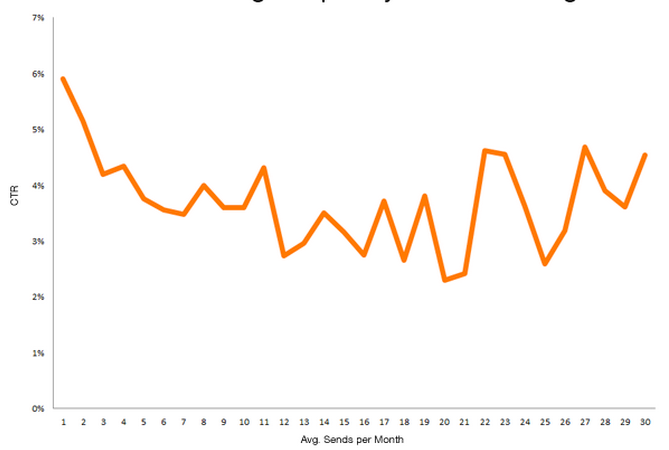
Image credit: HubSpot
If you’re looking for a guide or framework to help you get started, here are a few excellent articles about finding the right frequency:
- Sending Frequency: More Is Not Always Better! (MailChmp)
- Maximizing Your Autoresponder Campaign: Content, Length & Frequency (ConversionXL)
- Email Marketing: The Cold Hard Truth About Frequency (CrazyEgg)
Another thing to consider is the ratio of emails offering value to those “pitching” (asking for action). If you pitch too much and skimp on value, you’ll put off many of your subscribers. But not pitching enough doesn’t help your bottom line.
AdWords expert Perry Marshall recommends around 80% of your emails offer value and 20% pitch. It’s kind of like making the perfect peanut butter and jelly sandwich; you have to get the mixture just right.
The only way to know for sure what will work best for you is to test. Which takes us to the last step…
5. Test, Track, and Tweak
A lot of online marketing gurus tout drip email campaigns as a “set it and forget it” solution to solve all of your email marketing worries…
Things aren’t quite that simple though.
Yes, drip email campaigns save time by automating much of your email marketing. But the only way to find out if your campaigns are working—and how to improve them—is to track the results, test new ideas, and tweak your campaigns over time.
Setting up drip email campaigns and filling them with compelling content is hard work. So you might as well get the most mileage out of them as you can.
Optimizing your email campaigns is an important part of any conversion optimization strategy. Other businesses are letting leads and customers fall through the cracks, but you don’t have to. Continuing to maintain and improve campaigns creates a competitive edge that pays off for years down the line.
Start Building Your Email Marketing Machine Today
Drip email campaigns can be a busy business owner’s secret weapon. What better way to build relationships than to automatically send personal, relevant messages designed to reach your conversion goals?
The formula is simple:
Start with one list segment and pick a single goal. Create content designed to resonate with that segment. Experiment with email frequency and track your results.
You won’t get everything perfect right away, and you don’t have… as long as you’re willing to experiment and optimize your campaigns over time.
If you’re ready to make the most of your resources and free up time to focus on other aspects of your business, there’s no better time to start than now!


